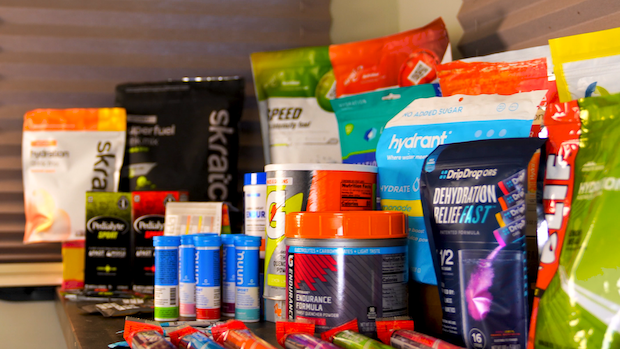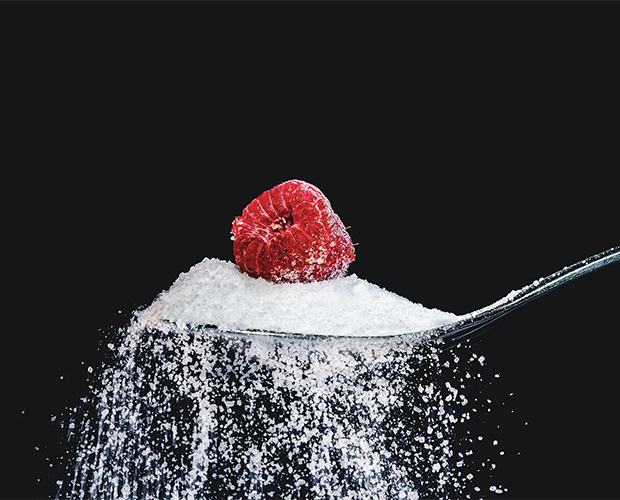Should You Scale Carb Intake Down on Easy Days?

It can be a dangerous game to scale your hourly carbohydrate intake downwards during training. Even when scaling according to activity, duration, and intensity. It can lead to questions like “did I earn this fuel?” which is one of the slipperiest slopes in nutrition. However, it’s also probably a good idea to consider scaling your carb intake back a bit if you’re sometimes using very high-carb intakes.
Your intuition is probably telling you that you don’t always need to be gulping sugar-water, and your intuition is right.
First, before you can scale something back, you have to know what the upper end is, so you know where you’re even pulling back from. Then you need to know how much and when to scale things back. (That’s where the previous articles in this series come in.)
If you’re short on time, the summary is: there’s really good evidence that some folks, and not just elites, can benefit from using 100-140 grams of carbs per hour in training and racing. It might take gut training, but not much (if any), especially for the lower end of that range. What it does take is some skill in implementation.
I wish I could say that there have been books written on this. Unfortunately, the prevailing dogma, which has been confirmed in misguided practice by all of us for decades, is that nutrition is a black box that involves loads of trial and error, and that 90 grams per hour seems to be the upper limit of what’s useful and possible.
That’s simply not true. Thankfully the research industry and, with some effort by my wife and I, the app industry, are both catching up to what many athletes have known for more than a decade, via their own careful implementation and tracking. But, just because 120 grams per hour is the maximum for you (it might be higher) doesn’t make it optimal. Sometimes less is more. Let’s get into the real world for a minute.
Here are some good times to implement high-carb fueling:
1. Races over 3 hours.
2. Training sessions where effort is moderately high, that are>3 hours.
3. Training sessions>5 hours with anything but the easiest possible.
4. If you’re practicing race nutrition in preparation for a race. GI issues are caused far more often by poor implementation than by overconsumption.
5. If you’re training your gut to handle more carbs, even if effort is low, or for shorter duration activities.

So, that leaves the following scenarios where we’ve yet to figure out what to do, if we’re not going to be slamming>100g per hour carbohydrate:
1. Not gut training or practicing fuel implementation during lower-effort activities in the 3-5 hour range.
2. Higher effort activities shorter than 3 hours, while also not gut training or practicing fueling implementation.
I’ll assume that both those latter options comprise more than 50% of your training. If you’re knocking out higher effort 3 hour sessions more than 2 days a week, I’d hope you’ve already figured this out by now or you’re likely to have been having really spotty training quality. That being said, there is good reason to be practicing race fueling until you’ve got it down pat. And sometimes easier shorter sessions are nice to play with new things. Lower risk. Closer bathrooms. Fewer hours of suffering if it goes wrong.
For us mortals, we need to go beyond practicing higher intake rates. We should consider scaling back our carb intake rate ranges first by duration, and second by intensity, most especially for the lowest intensity workouts. But duration trumps intensity, always. For a good look at duration-based carb intake rates, and a more detailed explanation of what and how to consider, this is a good video, replete with a handy table for your reference at the end of the video.
Duration is the biggest driver of increased carb intake rates because you simply run out of endogenous carbs (carbs stored in your body) to burn. If you don’t have a high fuel rate, when those start to run out, blood sugar is going to drop. Performance follows blood sugar.
Even if you do fuel at a high rate, blood sugar may drop. But fueling even modestly is a recipe for feeling ever more fatigue during very long training sessions and races. To keep blood sugar optimal, very high-carb fueling, usually well in excess of 80 grams per hour, and often much more than 100 grams per hour, is necessary.
Intensity related fueling changes come into play most strongly when intensities are lowest. The difference in your internal carb oxidation (burn) rate between super low effort, and somewhat low effort, can be substantial. The reason the difference between the lower intensities matters more than those of higher intensities: you're burning almost exclusively carbohydrate whether you’re doing HIIT training or threshold work.
Put plainly, your carb needs are going to be based more on duration, purely, in those cases because there’s little difference in the carb vs fat utilization ratio. That is, you’re burning carbs, when you’re working hard. It just comes down to how long you burn them. It’s when your effort level drops well below threshold for the quality portions of your activity, that we can consider scaling carbs back. I might recommend a very very slight, or nonexistent reduction in rate, when stepping down from threshold to sub-threshold, higher end aerobic, “tempo,” or “sweet spot” training. Better to be well-fueled when operating at relatively high efforts.
Once down in the lower aerobic intensities, for those with good fitness, or long training history, there can be a pretty marked step down in necessary fueling rate with no meaningful difference in performance. Consider taking the biggest steps down in fueling rate for shorter activities and progressively smaller steps down in fuel rate for longer activities.
If you’re newer to endurance sport, or maybe a bit heavier, or less fit, (I am all three of these things) maybe take less of a carb rate reduction for low intensity work. You’re inefficient. Me too. It means we burn more carbs per hour and a greater relative proportion of our energy comes from carbs. Don’t try to increase your fat oxidation by cutting carbs either. Just accumulate training time, and you’ll get better at burning fat and carbs.
For virtually everyone, when intensity is pared back to “recovery,” ie. the very easiest training, fuel intake rates can often be cut in half, comfortably. For the shortest recovery activities, it sometimes makes sense to not fuel at all. For longer ones, one third of your max fueling rate might make sense.Stay tuned for an upcoming crash course. For now, keep your carb simple and limited to glucose and fructose. Limit or completely eliminate fat, fiber, and protein, from your fueling plan. Drink and salt more. Your gut will thank you.
Not sure how much salt? Here’s some quick help:
Consume plenty of carbs when they count, and less when they don’t.





Start the discussion at slowtwitch.northend.network